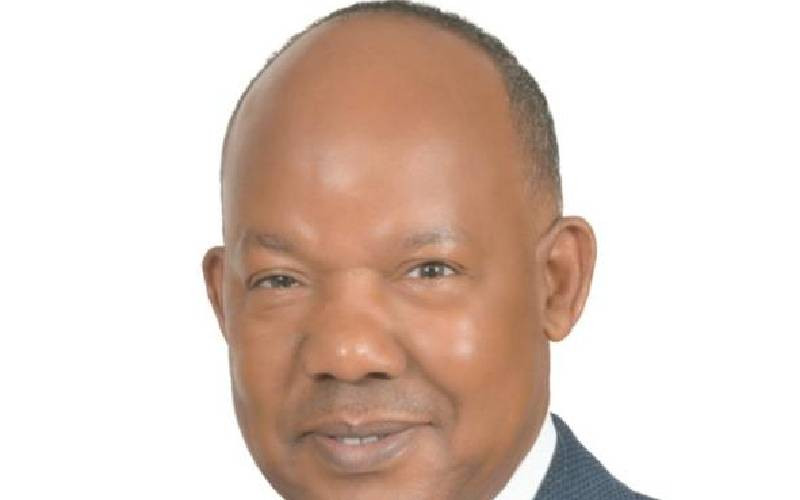There can be no meaningful economic prosperity if our people are burdened by disease. That is why the 2010 Constitution wisely devolved health services to the counties.
But as one moves from national to county levels, capacity, especially in human resources and systems, thins out alarmingly. It’s no wonder public outcry about the dysfunctionality of county health services is so common.
I recall Senator Boni Khalwale, a medical doctor, once asking that health be removed from the Fourth Schedule and returned to the national government, citing large-scale county-level failure. The evidence was (and remains) everywhere: Health workers going on strike due to salary delays, drug stock-outs, patients queuing endlessly for absent doctors, while the well-to-do jet off for treatment abroad.
Follow the The Standard
channel
on WhatsApp
The Kenya Kwanza administration’s shift from NHIF to the bungled SHA only made things worse. Even the poor who manage to pay SHA contributions are left uncovered when they arrive at facilities that barely function. But must it be this way? Not.
Singapore’s Lee Kuan Yew once said the difference between their success and Africa’s stagnation is that they put their best brains forward while we promote our most incompetent. Harsh? Maybe. True? Painfully. But he missed one thing: Transformative leadership entails courage, policy, and above all, integrity. Not just competence. No policy or bold idea will survive in corrupt hands.
So, is it possible to provide world-class healthcare at the county level, quickly and affordably? Yes. And here’s how. Kenya is blessed with smart professionals locally and in the diaspora. We have technical capacity and workable models to transform county health systems. The goal is simple: Shift from patient-centred to people-centered systems. Emphasise prevention, invest in lower-tier facilities, leverage data, and bring healthcare to the community.
One of our biggest mistakes is our lopsided spending. Counties pour 80 per cent of health resources into level 4 and 5 hospitals, where only 20 per cent of the disease burden lies, while neglecting lower-level and community-based facilities that handle 80 per cent of cases. The 2023 Kenya Health Facility Census paints a grim picture: In 44 counties, between 80–100 per cent of tier 2 facilities have fewer than three nurses. In Mt Kenya, Kirinyaga tops the crisis at 100 per cent, followed closely by Nyandarua, Embu, Laikipia, Murang’a, Nyeri, and Meru. In Nyeri, for instance, a staggering share of resources likely goes to the County Referral Hospital (tier 5) and four tier 4 facilities. This leaves 107 tier 2 and 3 facilities starved. That needs to change.
Imagine a system where we invest in those 107 facilities and strengthen community health units with trained, well-paid health promoters. Not the token Sh5,000 currently offered. With early diagnosis and treatment, we’d slash the cases that escalate into costly emergencies requiring dialysis or surgery.
This reform starts at three levels. Firstly, tier 4 and 5 hospitals need to be autonomous, professionally managed institutions. Recruit competent hospital managers competitively and pay them well, even if it means getting creative with compensation. Hold them to clear targets: Cleanliness, customer service, data systems, drug availability, and even green recreation spaces. Let each hospital retain its revenue and specialise. One might focus on paediatrics, another on maternal health, and so on. The county referral hospital (tier 5) would offer comprehensive care. Surrounding tier 3 facilities would form supervised networks linked to these hospitals.
Secondly, for tier 2 and 3 facilities, we need a proper ‘hub and spoke’ system. Build a few specialised tier 3 hubs with focused expertise, then link surrounding facilities (the spokes) to them through solid referral pathways. Let’s stop pretending we can do everything everywhere, as we’ll end up doing nothing well. Disease-specific specialisation makes better use of limited human and technical resources.
Thirdly, let’s strengthen the community level. In Nyeri, there are 251 community health units. Retrain and expand their mandate. Align their referral role to the nearest specialised facilities. Coordinate them with ambulance services. With proper support, these units can be the frontline of prevention, health education, and early treatment. The transformation is within reach. The question is: Who will show the way?
Follow the The Standard
channel
on WhatsApp
By Gachara Kamanga


